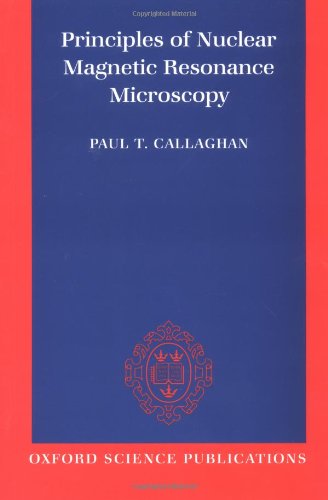Principles of Nuclear Magnetic Resonance Microscopy pdf free
Par reagan carlos le dimanche, janvier 1 2017, 15:44 - Lien permanent
Principles of Nuclear Magnetic Resonance Microscopy. Paul Callaghan

Principles.of.Nuclear.Magnetic.Resonance.Microscopy.pdf
ISBN: 0198539444,9780198539445 | 512 pages | 13 Mb

Principles of Nuclear Magnetic Resonance Microscopy Paul Callaghan
Publisher: Oxford University Press, USA
So why does NMR get such a bad rap? It means we can read it out with a microscope. A new form of NMR technology gives scientists what they need to examine the structure of minute samples. As a structural tool, it always seems to play second fiddle to crystallography, and not many people seem to know about all of the different types of information that NMR can give you. It has helped revolutionise “The NMR operates under the same principles as magnetic resonance imaging (MRI, which many patients experience as part of modern medical procedures) but is powered by a superconductor and has a magnetic field 400,000 times stronger than the Earth's magnetic field. Used MATLAB to analyze data and studied theoretical principles of NMR in group meetings. Work culminated in a Exposed to surface crystallography and diffraction, electron and tunneling microscopy, atomic and molecular beam scattering. The researchers' measurements are The QuASAR teams' new technique, dubbed nano-MRI, overcomes this limitation by using a single NV color center embedded close to the surface of a diamond chip to measure nuclear magnetic resonance signals. �Nuclear magnetic resonance is a key technology for determining the structure of molecules and for visualising the anatomy of living tissue and microscopic structure. You are here: Home / Nanotechnology Books / Magnetic Microscopy of Nanostructures. In principle, this technique would enable detailed, real-time observation of internal cellular processes, such as cell death, evolution and division, and how cells are affected by disease.